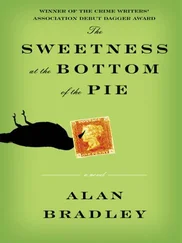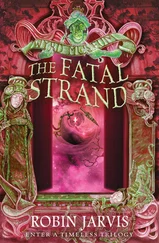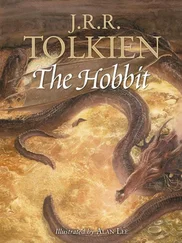Once inside the cells, the virus begins reproducing madly. Even in the throat, which is at best a secondary target, the amount of virus can exceed that of normal flu. Down in the lungs, there are at least ten times more than in the throat, in some instances even a hundred times more. This is a virus in a hurry. And the human body, which has never encountered anything like it, has no ready arsenal of antibodies to choke off the process.
The body can still marshal its innate, all-purpose defenses. But in doing so, it mounts a counterattack so furious that some scientists believe it’s more lethal than the virus itself. The besieged cells raise the alarm by dispatching messenger proteins called cytokines. These in turn prompt a counterattack by the body’s defensive forces. Immune cells of different stripes, including killer T cells, macrophages, and other white blood cells, flood into the infected lungs, ferociously attacking the virus and the cells that have fallen into enemy hands.
This is the fateful battle on which life could turn. There is no restraint, nothing held back. The body throws everything it has at the intruder without regard to the tremendous collateral damage this causes the lungs themselves. The cytokines keep firing and firing in what scientists call a cytokine storm. (Researchers debate whether the massive response is due to the tremendous amount of virus in the system or the nature of the pathogen itself. Unlike regular flu viruses, which have a way of calibrating the immune response, this strain may not.) Ever more immune cells are summoned to the front and continue to blast away. The carnage mounts. The lung cavities fill with dead and damaged tissue, mutilated mucus cells, and other cellular wreckage. The lungs become rigid as the cells that make liquid to keep the lungs flexible are annihilated. The seal between the bloodstream and the air passages ruptures. Red blood cells and plasma leak into the lungs. The alveoli sacs are swamped with fluid and debris and are no longer able to exchange carbon dioxide for oxygen. If you listen closely, you can hear the liquid crackling. Your breathing accelerates. You desperately press all your chest muscles into helping you suck down precious oxygen. You’re gasping for air. This is the acute respiratory distress syndrome, known as ARDS, that struck Hoi-ka. On a series of X-rays, it appears like a white ghost consuming your lungs. You’re drowning.
But the virus is not content to remain a solely respiratory disease like regular flu. From the lungs, the pathogen sets upon other vital organs. It invades the digestive tract, perhaps when you swallow contaminated sputum, but more likely via the blood. The virus gets into the gut, often causing diarrhea and sometimes vomiting. It can assault the liver and kidneys, as it did with Hoi-ka. It can provoke heart failure. It can attack the eyes. It can even breach the brain and spine, on rare occasions causing encephalitis and related seizures. This virus has shown a singular facility to smuggle itself through the bloodstream and proliferate throughout the body.
Yet in the end, the lungs are where this microbe concentrates its energies and takes its heaviest toll, whether by killing directly or inviting a suicidal counterattack. The lungs are also the means by which it casts its net for further prey. In this one regard, it is much like its seasonal cousin. They both spread their sickness through contaminated droplets coughed or sneezed into the air, one of the most efficient forms of transmission known.
Influenza viruses, like all viruses, defy definition. Are they alive? On one hand, they lack the cell structure shared by all other living things from humans down to the amoebas that students study in science class. But at the heart of a virus is genetic material, the basic blueprint of all life, and viruses share the imperative of all living things to reproduce and pass on their genes before they perish.
The flu virus contains eight pieces of RNA, accounting for all of its genes. These determine everything about the virus: how it’s structured, how it reproduces, how it spreads, who or what it infects, and how sick it makes them. In particular, the genes program the proteins that do all this heavy lifting.
The virus itself is a microscopic sphere studded with two types of these proteins. One is the hemagglutinin, a spiky protrusion that the virus uses to break into the cells of its host. The other is the mushroomlike neuraminidase, which the virus uses to break out again. The two are called H and N for short. Each can take slightly different forms—scientists have so far discovered sixteen H subtypes and nine N subtypes—and the subtle variations that define them can mean life or death to the host. Human antibodies can recognize certain of these surface proteins and disarm them, but they are powerless against those that are totally new.
The flu virus most often enters the human body by hitchhiking a ride on an inhaled droplet. As the virus is whisked through the nose and down the windpipe, it brushes along the cells lining the airway. These cells have special receptors. Some are a poor fit for the specific hemagglutinin subtype that has been inhaled, so the virus keeps going. But some are just right. When the hemagglutinin finds the right receptor, the spiky protein plugs in, allowing the virus to fasten to the outside of the cell like a pirate ship preparing to board another vessel. The human cell seeks to stem the attack by engulfing the virus, then walling it off while trying to digest it with acid. But all the cell has done is speed its own demise. The acid triggers a remarkable transformation of the flu virus. The hemagglutinin turns itself inside out, baring a hidden weapon often likened to a molecular grappling hook. The virus uses this to pull itself even tighter against the cell. The membrane of the virus dissolves, and the viral genes stream into the core of the cell like marauding buccaneers.
A virus cannot reproduce on its own. But once inside the human cell, it finds everything it needs to do so. The viral genes hijack the cell’s own genetic machinery and deliver fresh commands. The innocent cell is soon churning out viral proteins, which are assembled into a brood of new viruses. Within hours, up to a million progeny are ready to explode forth and continue the mission.
But escaping the cell is not so easy. The same receptors on the cell’s surface that first attracted the virus now try to ensnare its offspring. So the neuraminidase steps in to cut them loose, leaving behind the lifeless wreckage of a human cell.
Most flu viruses fall into one of two types, either influenza A or influenza B. While the former can infect a wide array of species besides humans and cause severe illness, the latter tends to be found only in people and is less virulent. Influenza A viruses are further categorized by the proteins on their surface. The strain that struck Hong Kong in 1997 and continues to menace the world today is identified, for instance, by its H5-type hemagglutinin and its N1-type neuraminidase, hence influenza A (H5N1). Like all flu viruses, H5N1 originated in waterfowl, and that’s where most flu strains stay, circulating benignly among wild birds. But over the centuries, a few strains have succeeded in crossing the species barrier, either directly or via intermediate hosts like pigs, to infect people. Over time, these have evolved into the ordinary seasonal viruses that we usually associate with flu, losing much of their bite as humans develop immunity. The prosaic H1N1 strain that in recent years has kept millions of people in bed each winter, for example, is descended from a virus that first infected humans in the early twentieth century, sparking the catastrophic Spanish flu pandemic of 1918. The swine flu strain that erupted in early 2009 is also an H1N1 strain and it too can trace its lineage back to the Spanish flu. But swine flu, which scientists believe emerged only recently from pigs, has diverged so far from other H1 viruses over the years that vaccines against the seasonal H1N1 variant afford little protection against this new arrival.
Читать дальше











